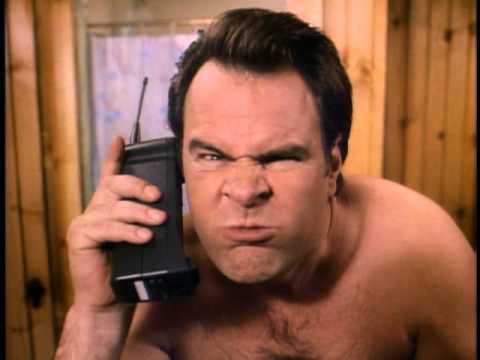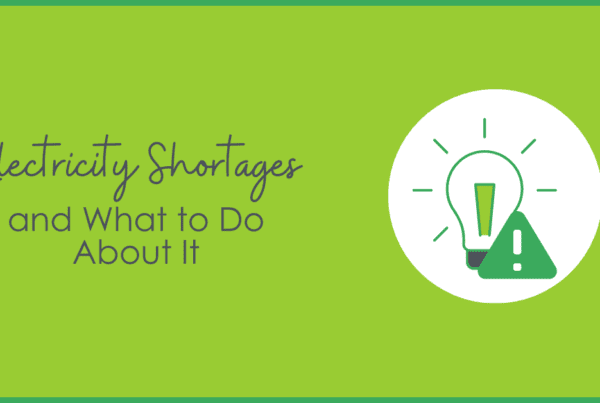
The Association of Energy Services Professionals (AESP) Summer Conference included interesting bookend plenary discussions for this post. The opening plenary featured motivational speaker, Murray Banks; not to be confused with Matt Foley: “eating a steady diet of government cheese and living in a van down by the river”. Actually, if triathlons and mountaineering were auto racing, the Banks family would be the Andrettis.
The closing plenary featured representatives from SolarCity, Opus One Solutions, and Enbridge, Inc. SolarCity is the Elon Musk-owned photovoltaic manufacturer/installer. Opus One is a smart grid software company with ties to Tesla as well. Enbridge is a giant oil and natural gas pipeline company and utility in Canada.
Part of Mr. Banks’ discussion featured, “What got us here will not get us there.” The undertow of this part of the discussion is that technology changes constantly, and the ground is always shifting under our feet. In the process of explaining this, he featured the classic example of the mobile phone.
The brick phone was introduced first. These babies cost $4,000 in 1984, shown nearby by Dan Aykroyd’s character in The Great Outdoors. Adjusting for inflation, that would be a $9100 phone today. Suddenly, $680 for an iPhone 6 (unlocked) seems like a good deal – along with 14 hours of talk time versus 30 minutes for the clunker shown.
The brick phone preceded the bag phone, which Mr. Banks talked about. This baby came onto the market in 1990, and was available through 2000.
The bag phone requires about 55 Volt-Amp-hour per hour of talking while the iPhone 6 requires only 0.49 Volt-Amp-hour per hour of talking: a 112 fold increase in efficiency measured in energy per hour of talk time, not to mention the slight increase in computing capability. The brick phone could hold up to 30 phone numbers – wow!
People who think the transition from central plant and distribution of electricity by wire to distributed everything and disconnection from the grid will go the way of telecom to cell phones are in for a bad trip.
The vast majority of the talk-time and physical shrinkage of the cell phone is due to electronics, with some help from lithium-ion batteries. Conversely, energy consumption of the typical home or business has barely budged. Lights, televisions, and some other electronics are becoming much more efficient. However, the addition of loads for all the gizmos of modern life is keeping the total consumption and load about the same.
As I was listening to the closing plenary concerning micro solar power and battery storage, I was thinking to myself, “Why? What is the point of all this? What is the consumer gaining besides a pain in the neck?”
Eliminate Problems, Reduce Hassle; Don’t Add More
I attended several presentations at the conference that talked about non-energy benefits and collaborating with customers to improve their lives and their business. Energy savings come along for the ride. This is the key to successful uptake. You solve a customer problem, improve productivity, take something off their task list – and they love you.
Adding micro-CHP, solar panels, battery storage, this and that to my home either:
(A) Complicates the hell out of my life and gives me other things that will eventually break and malfunction. And I have to control it when I have nothing to control now. Xcel Energy reliably delivers power to my home, and when something goes wrong, it’s their problem. Or,
(B) I would turn over control of my micro power plant to Xcel Energy. I can assure you, they don’t want that hassle or responsibility. Furthermore, every study of recent times say customers want control of their power consumption and supply – but this would mean I’m turning control of my stuff over to the utility. Does not compute.
This decentralization idea bucks every trend in business that has occurred in recent decades. This has accelerated especially in the last decade. As my colleague suggested to the panel:
- Grocery stores have become restaurants, florists, banks, beer, wine, and liquor stores, picnics, coffee shops, and who knows what else. They may even sell cars now.
- Amazon.com has replaced my trips to discount, home improvement, hardware, farm equipment, auto parts, clothing, shoe, electronics, movie, music, grocery, health and nutrition, and probably a dozen other types of stores I hardly ever visit anymore.
Thinking micro distributed generation, combined heat and power, PV, batteries, etc. are going to have a major impact on utilities seems to be like thinking the bread machine is a threat to Sara Lee. Sure. Some people will want to dink around and make their own bread. Everyone else will get it at the restaurant/florist/bank/beer/wine/deli/booze/coffee shop/store, or Amazon.com.
Furthermore, electricity is like water. It is a commodity and the same everywhere, except for impurities (minerals and power quality). It is not like the services I get on a cellular phone.
Batteries are not going to power a home like the slim batteries in my laptop and other devices. Those batteries last long because the devices use tiny amounts of energy. People seem to think the same will apply to their house. Not so.
This just in: Rocky Mountain Institute[1] agrees with this post and last week’s post.
[1] Posted after my post last week.







You hit the nail on the head. We engineers can easily over complicate things. Steve Jobs was right way back when he said that a personal computer had to be like a toaster to be a success. That vision drove Apple to make products and software easy to use. Not everyone wants to be a computer whiz to shop on line and get email.
Same with energy. Anyone that has ever run a plant or similar operation knows that it never is as easy as it looks. Lots of moving parts and things do break and do go wrong. The typical consumer wants reliable, simple electricity. Flip a switch and the light comes on. That’s it. No checking net meters or battery charge levels or solar output. Home power is a losing business model unless it works as good as an iPhone.